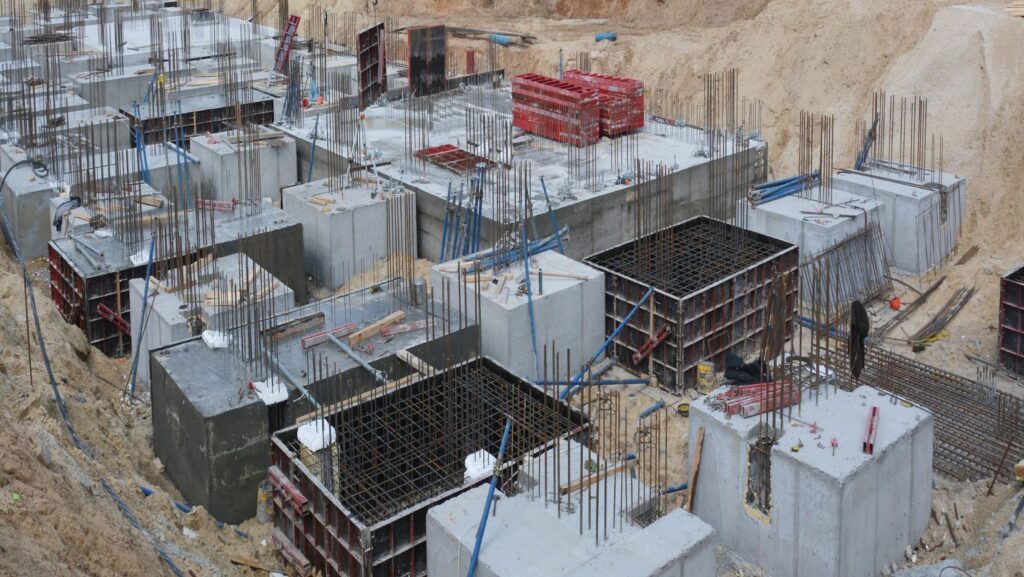Construction sites are bustling with activity, each worker focused on their tasks with precision and efficiency. Among the myriad activities that take place, concrete formwork construction stands out as a critical component in building sturdy structures. The term Concrete Form refers to the molds or frames into which concrete is poured to give it the desired shape and structure. While this process is essential for creating solid foundations and structures, it also comes with inherent risks that must be managed meticulously to ensure the safety of workers and the quality of the final product.
Contents
Table of Contents
ToggleUnderstanding Concrete Formwork
Concrete formwork is crucial in the construction industry because it dictates the shape and integrity of concrete structures such as walls, slabs, columns, and beams. Forms can be made of various materials such as wood, steel, aluminum, or prefabricated forms made of plastic or other materials. The choice of formwork material depends on factors like the type of structure, required finish, and budget constraints.
Formwork systems generally consist of panels, shores, and supporting systems that hold the concrete in place until it sets and gains adequate strength. These systems must be robust enough to withstand the pressure exerted by the wet concrete and the weight of workers and equipment during the pouring and curing stages.
Key Safety Considerations
- Structural Integrity of Forms: The primary concern during concrete formwork construction is ensuring the stability and strength of the forms themselves. Forms should be inspected regularly for any signs of wear, damage, or misalignment. Any compromised forms must be repaired or replaced immediately to prevent collapse during concrete pouring.
- Proper Shoring and Bracing: Shoring and bracing are essential to support the weight of the forms and the concrete load. Shores and braces must be installed according to the manufacturer’s specifications and engineering designs. Overloading or improper placement of shores can lead to catastrophic failures, endangering workers and delaying the construction schedule.
- Fall Protection: Working at heights is an inherent risk in formwork construction. Proper fall protection systems such as guardrails, safety nets, and personal fall arrest systems (PFAS) must be in place to prevent workers from falling off the formwork. Training on the correct use of fall protection equipment is also crucial to ensure compliance and effectiveness.
- Safe Access and Egress: Workers must have safe access to and egress from the formwork platforms. Stair towers, ladders, or ramps should be provided and securely anchored to prevent movement during use. Adequate lighting and clear signage can also help prevent slips, trips, and falls, especially in low-light conditions.
- Concrete Pouring Practices: The process of pouring concrete into forms requires careful planning and coordination. Workers should be briefed on the pouring sequence, flow rate, and vibration techniques to minimize the risk of form displacement or collapse. It’s crucial to monitor the concrete’s viscosity and adjust pouring techniques accordingly to ensure uniform distribution and proper consolidation.
- Weather Conditions: Adverse weather conditions such as rain, wind, or extreme temperatures can affect the integrity of formwork and concrete. Formwork systems should be designed and installed to withstand anticipated weather conditions during construction. Temporary enclosures or protective covers may be necessary to shield the formwork and concrete from the elements.
- Training and Supervision: Proper training is essential for all personnel involved in concrete formwork construction. Workers should be trained in the safe assembly, installation, and dismantling of formwork systems, as well as emergency procedures in case of accidents or failures. Experienced supervisors should oversee the work and conduct regular safety inspections to ensure compliance with safety standards and regulations.
Case Studies in Safety Excellence
Several construction companies have demonstrated exemplary safety practices in concrete formwork construction. For instance, ABC Construction implemented a comprehensive safety program that includes daily safety briefings, regular equipment inspections, and continuous training for workers. As a result, they have significantly reduced incidents related to formwork failures and worker injuries.
Similarly, XYZ Builders utilize advanced formwork systems that are prefabricated off-site to stringent quality standards. This approach not only improves construction efficiency but also enhances safety by reducing the time workers spend assembling and dismantling formwork on-site.
Regulatory Compliance and Standards
Regulatory agencies such as OSHA (Occupational Safety and Health Administration) in the United States and similar bodies worldwide set stringent safety standards for construction activities, including concrete formwork. These standards mandate the use of appropriate formwork materials, engineering designs, and safety measures to protect workers from hazards associated with formwork construction.
Compliance with these standards is non-negotiable for construction companies, as failure to adhere to safety regulations can result in fines, project delays, and reputational damage. By prioritizing safety and investing in robust safety programs, construction firms not only protect their workforce but also enhance project efficiency and profitability.
Conclusion
Concrete formwork construction is a critical aspect of building infrastructure around the world. While it offers the opportunity to create durable and aesthetically pleasing structures, it also presents significant safety challenges that must be addressed proactively. By focusing on structural integrity, proper shoring, fall protection, and adherence to safety standards, construction companies can mitigate risks and create a safer working environment for their employees.
As technology and materials continue to evolve, so too do the methods and safety practices associated with concrete formwork. Continuous training, innovation, and collaboration among industry stakeholders will drive further improvements in safety, ensuring that concrete formwork construction remains a cornerstone of modern infrastructure development while safeguarding the well-being of construction workers globally.



